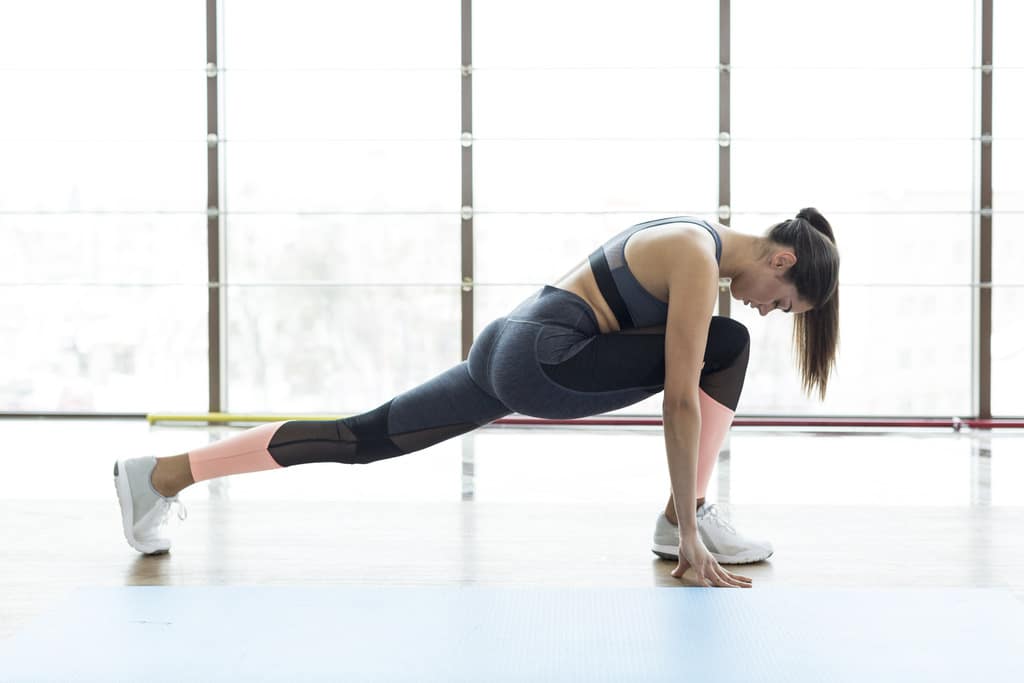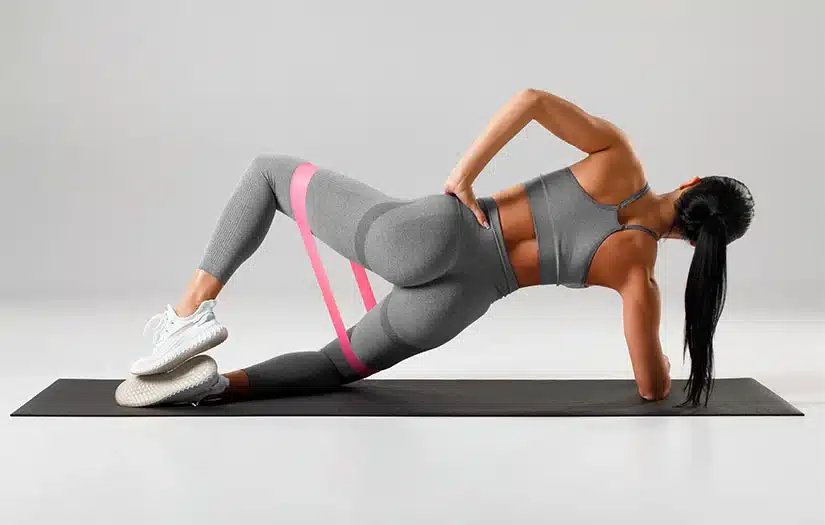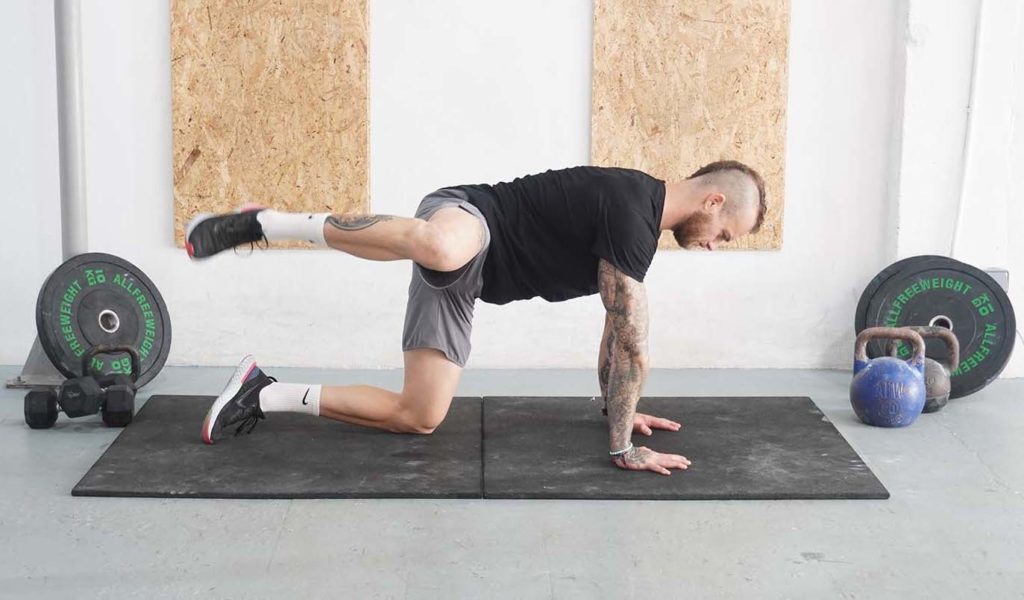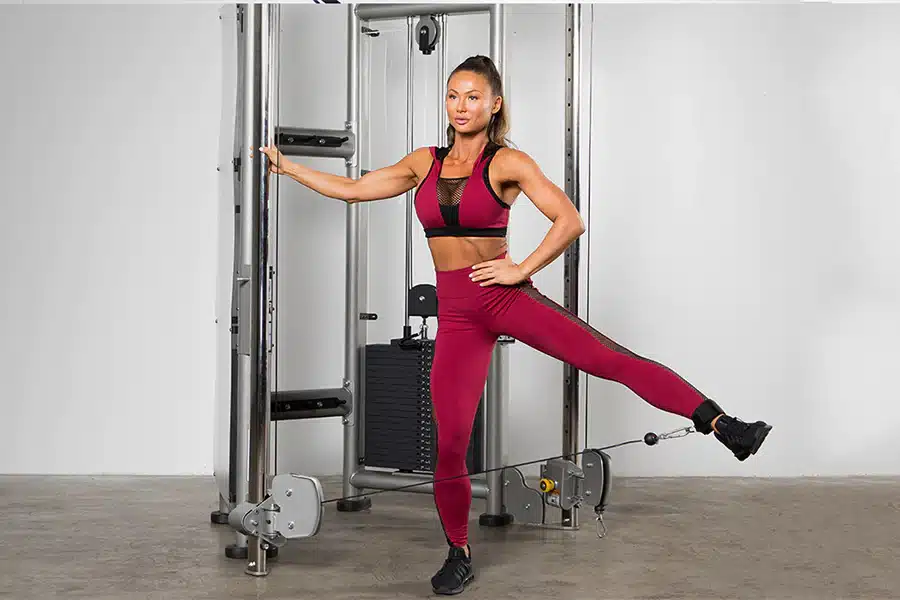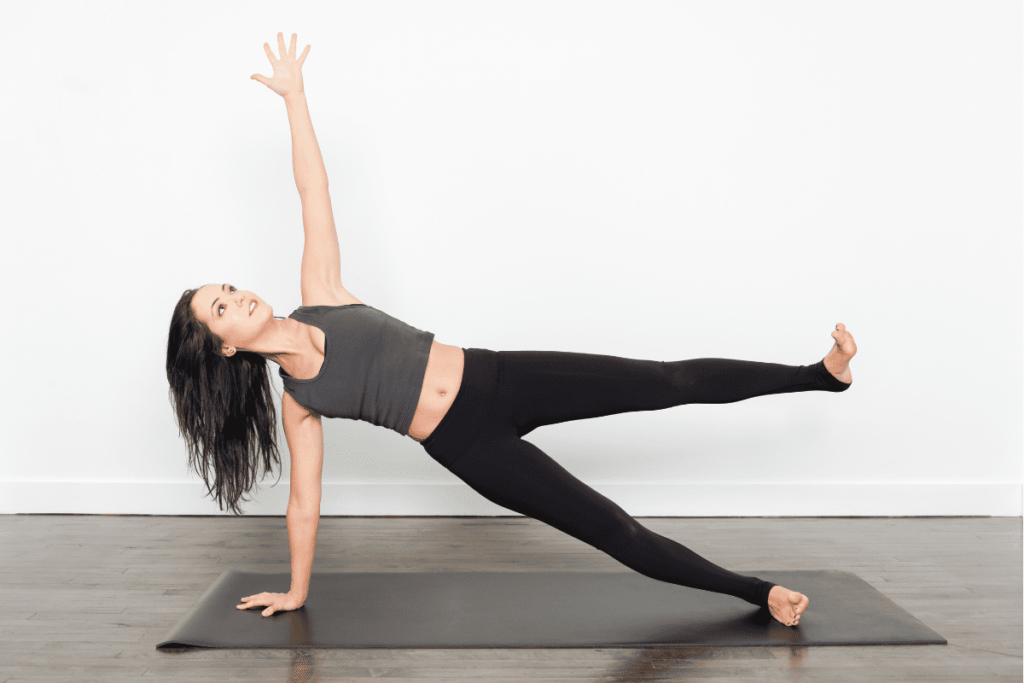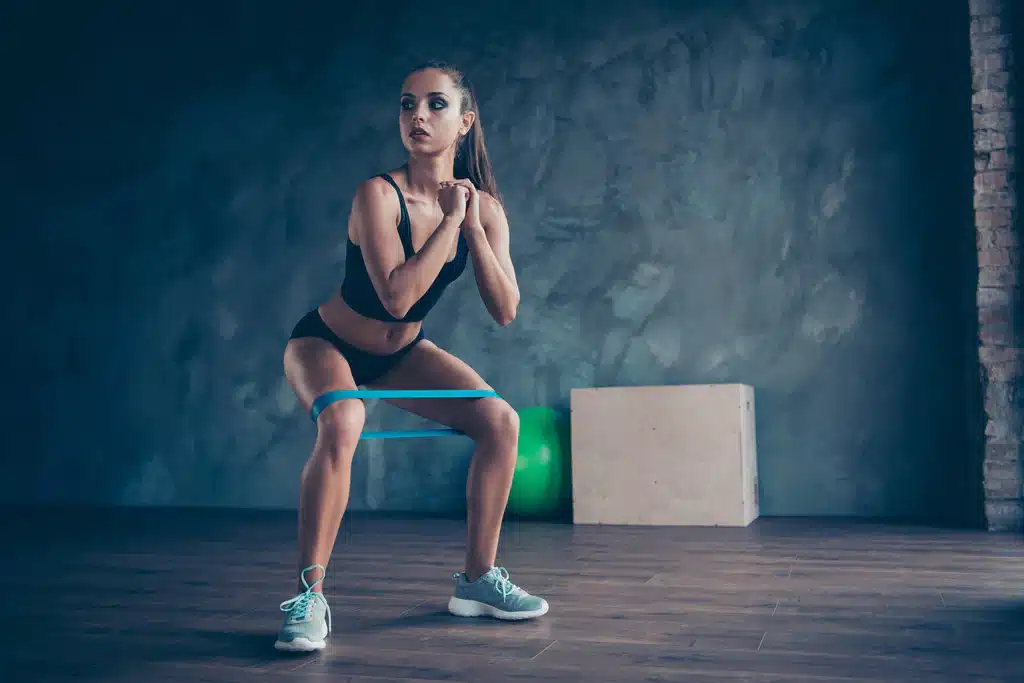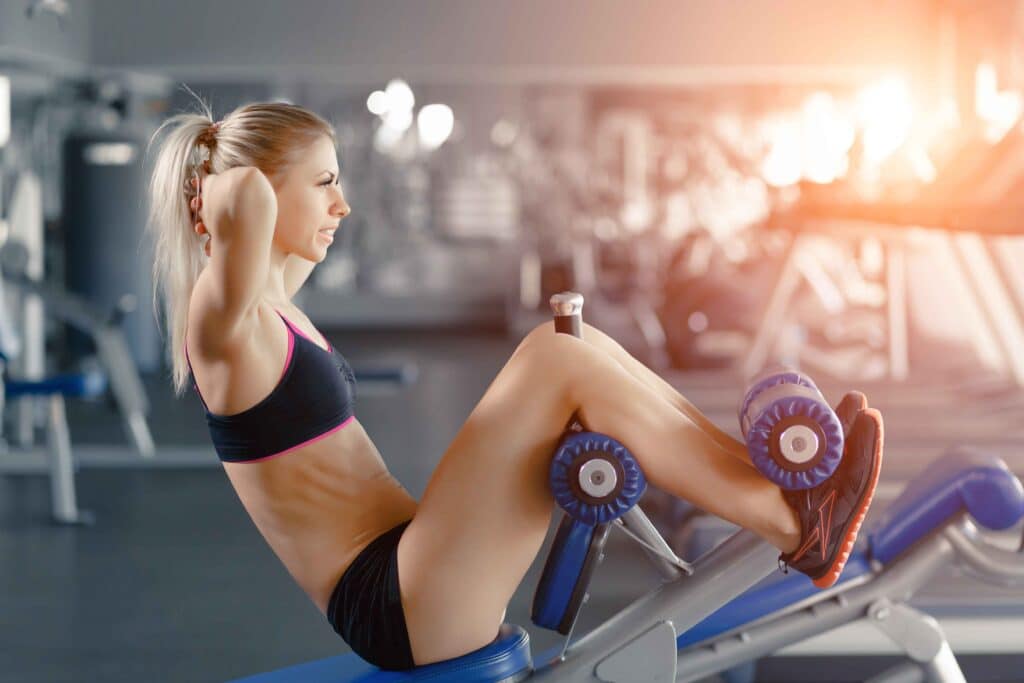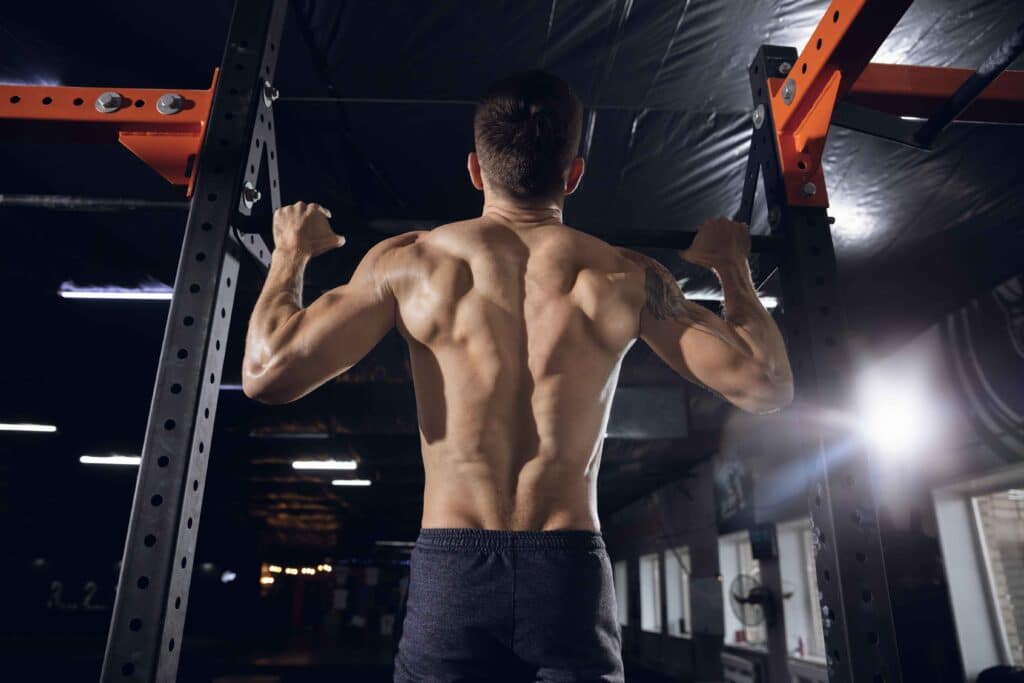While often overshadowed by its larger counterparts, the gluteus maximus, and medius, the gluteus minimus plays an essential role in stabilizing your hips and enhancing your overall lower body strength.
Whether you’re an athlete looking to boost your performance or someone seeking to achieve a balanced and functional physique, incorporating targeted exercises for your gluteus minimus is a game-changer.
This guide will unveil a selection of value-driven and simple exercises that will help you activate, strengthen, and tone your gluteus minimus.
So, let’s get going:
Best Gluteus Minimus Workouts At Home
Listed below are the best exercises for strengthening gluteus minimus:
1. Clamshells
Clamshells are an excellent exercise for targeting the gluteus minimus muscle, which plays a crucial role in hip stability and abduction.
By performing clamshells, you activate the gluteus minimus along with the medius muscle, which helps to strengthen the lateral hip region.
This exercise helps improve the muscle imbalances around the hips, enhance hip joint stability, and reduce the risk of conditions like IT band syndrome.
Clamshells also contribute to better overall hip function, especially during lateral movement and single-leg balance activities.
Step-By-Step Guide
Setup:
- Lie on your side on a comfortable mat, ensuring your head, spine, and hips are aligned in a straight line.
- Bend your knees to approximately 90 degrees, keeping your feet together. Your head can rest on your bottom arm.
Execution:
- Engage your core muscles to stabilize your torso and maintain proper alignment.
- Place your top hand on your hip to monitor any movement and ensure it remains still.
- While keeping your feet touching, slowly lift your top knee upward. Focus on using your glute muscles to initiate the movement.
- Continue lifting until you feel a comfortable stretch in your outer hip area or until you can’t lift any higher without rolling your hips backward.
- As you lift your knee, imagine opening like a clamshell, with your thighs separating while your feet remain touching.
- Hold the position at the top for a moment, feeling the contraction in your glutes.
- Lower your knee back down in a controlled manner, but do not let it touch your bottom knee. Keep tension in the muscles.
- Repeat the motion for the desired number of repetitions on one side.
- Switch to the other side and perform the same steps.
2. Fire Hydrants
Fire hydrants are a compound glute exercise that is effective in targeting the gluteus minimus muscle, working to enhance both hip strength and mobility.
This exercise engages the gluteus minimus and medius muscles, which support hip abduction and lateral movement.
By practicing fire hydrants, you help strengthen the muscles responsible for stabilizing the pelvis and preventing unwanted hip drop or sway. This, in turn, promotes better alignment during various daily activities and exercises.
Fire hydrants are particularly beneficial for runners, cyclists, and anyone looking to improve hip stability and function.
Step-By-Step Guide
Setup:
- Start on all fours, with your wrists under your shoulders and knees under your hips. Your spine should be in a neutral position.
Execution:
- Engage your core to stabilize your spine and maintain balance.
- Keep your right knee bent at a 90-degree angle and lift it out to the side. Your foot should be flexed and facing the ceiling.
- As you lift your knee, aim to keep your hips level with the ground. Avoid tilting your pelvis or arching your lower back.
- Lift your knee as high as you comfortably can while maintaining control and balance.
- At the top of the movement, your thigh should be roughly parallel to the floor.
- Slowly lower your knee back down to the starting position, avoiding any sudden drops.
- Perform the desired number of repetitions on one side before switching to the other side.
3. Standing Hip Abduction
Standing hip abduction is a dynamic exercise that isolates and strengthens the gluteus minimus muscle, enhancing its ability to perform hip abduction and stabilize the pelvis.
This exercise is especially effective in targeting the muscles that support lateral movement, contributing to better balance and coordination.
Standing hip abduction can help address muscular imbalances, support proper walking mechanics, and improve overall lower body strength.
This gluteus minimus exercise also engages the core muscles, creating a well-rounded workout that promotes functional strength and stability.
Step-By-Step Guide
Setup:
- Stand up straight with your feet together and arms by your sides. Engage your core for stability.
Execution:
- Shift your weight onto your left leg and slightly bend your left knee. This is your supporting leg.
- Keep your right leg straight and lift it out to the side, leading with your heel. Your toes should be pointing forward.
- As you lift your leg, maintain a strong core to prevent swaying or leaning to the opposite side.
- Lift your leg as high as you comfortably can without compromising your balance or form.
- Pause briefly at the top of the movement, feeling the engagement in your side hip muscles.
- Lower your leg back down with control, but don’t let it touch the ground between repetitions.
- Complete the desired repetitions on one leg before switching to the other.
4. Side Plank with Leg Lift
The side plank with leg lift exercise effectively targets the gluteus minimus and the entire lateral hip area.
By lifting the top leg while in the side plank position, you engage the gluteus minimus to stabilize the hip joint and maintain proper alignment.
This exercise is particularly beneficial for strengthening the glute muscles while simultaneously challenging core stability and shoulder strength.
Incorporating this intense gluteus minimus workout into your routine can help enhance hip stability, reduce the risk of hip injuries, and improve overall core strength and endurance.
Step-By-Step Guide
Setup:
- Lie on your side with your elbow directly under your shoulder and your legs fully extended. Your body should form a straight line from head to heels.
Execution:
- Engage your core muscles to maintain a stable plank position.
- Lift your hips off the ground, creating a straight line from your head to your feet. You can modify by keeping your bottom knee on the ground.
- Once in the side plank position, engage your glutes and lift your top leg while keeping it straight.
- Lift your leg as high as you can while maintaining the plank alignment. Avoid letting your hips sag or twist.
- Hold the lifted position briefly, focusing on using your glutes to lift the leg, not just momentum.
- Lower your leg back down with control, maintaining the plank position throughout.
- Complete the desired number of repetitions on one side before switching to the other side.
5. Lateral Band Walks
Lateral band walks are a functional and targeted exercise that effectively engages the gluteus minimus muscle, promoting hip strength and stability.
By using a resistance band to create tension during the movement, you activate the lateral hip muscles to a greater extent.
This exercise helps address muscle imbalances between the glute medius and minimus, leading to improved hip alignment and reducing the risk of issues like knee valgus.
Lateral band walks are highly beneficial for individuals seeking to enhance their athletic performance, increase hip strength, and prevent injuries related to hip instability.
Step-By-Step Guide
Setup:
- Place a resistance band around your ankles or just above your knees. Stand with your feet hip-width apart and a slight bend in your knees.
Execution:
- Keep a slight bend in your knees and maintain an upright posture with your chest up.
- Take a step to the side with your right foot, leading with your heel. Create tension in the band.
- Follow with your left foot, keeping a consistent tension on the band throughout the movement.
- Take a few steps in one direction (usually about 5-10 steps) while maintaining the slight knee bend and avoiding excessive swaying.
- To reverse the movement, step the opposite foot first and continue stepping in the other direction.
- Focus on maintaining resistance on the band and feeling the lateral hip muscles engage as you step.
Final Remarks
Remember, your fitness journey is a constant evolution, and focusing on the finer details like the gluteus minimus can lead to remarkable transformations.
By consistently integrating these gluteus minimus exercises into your routine, you’re investing in a more sculpted physique and a body that moves with efficiency and grace.
Your gluteus minimus might be a small muscle, but its impact on your overall strength and stability is immeasurable.
Unleash your hidden potential, stand strong, and stride confidently toward a healthier, more robust future.

